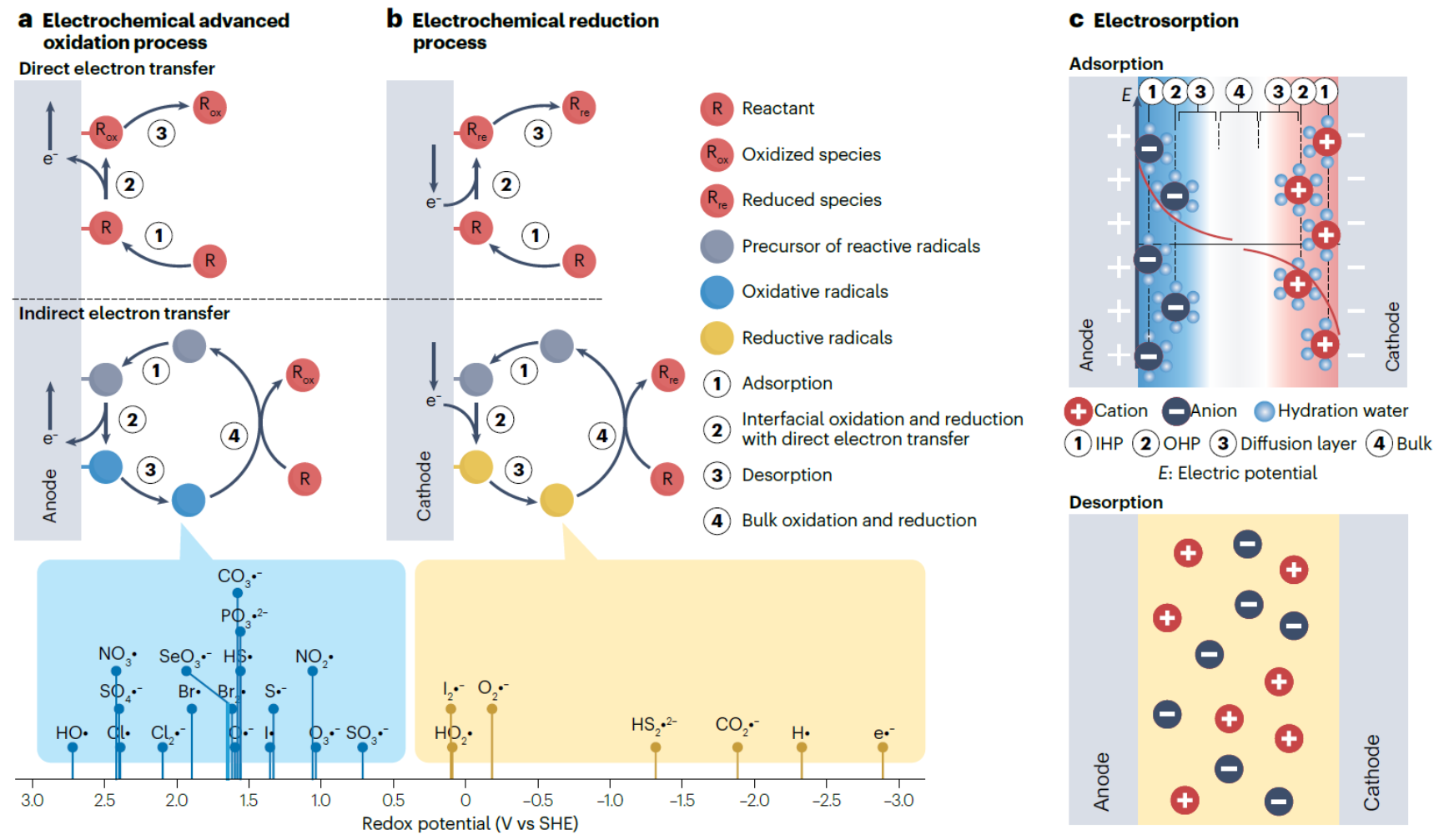
Water is a precious resource for life. Supplying and distributing water safely was one of the greatest engineering achievements of the 20th century. Electrified water treatment processes, defined as any electrode-based processes driven by an electric potential or current (potentially from renewable energy sources), directly utilize electricity to remove and degrade a wide range of organic, inorganic and microbial contaminants. Compared with conventional water treatment processes, electrified processes have a number of advantages. They remove contaminants by directly utilizing the electrical potential or current applied or by generating chemical reagents in situ, avoiding the costs and human health and environmental risks of chemical transportation and storage as well as disposal of the chemical sludge produced. Diverse process designs are available to treat a broad spectrum of contaminants, including mineralization of many refractory organic pollutants to form benign CO2 and water. Furthermore, because of the fast reaction kinetics, a compact, modular reactor design can be utilized, and operation can be highly automated with excellent tunability on reaction rate or degree of treatment. Finally, the electrode or membrane materials can be designed to be selective towards target contaminants, decreasing energy consumption and/or allowing resource recovery.
In this Review, we present the fundamental principles of several electrified water treatment processes including EAOPs, ERPs, and electrosoprtion (Figure 1), discuss the crucial role of electrode materials in the interfacial processes that drive contaminant transport and transformation, and comprehensively review the state of knowledge in electrode material development. Further, we analyse the advantages and limitations of current and emerging electrode materials and discuss strategies for developing advanced electrode materials. Finally, we outline a path towards next-generation water and wastewater treatment systems based on electrified processes.

Figure 1. Principles of main electrified processes for water and wastewater treatment. Direct and indirect electron transfer process in
(a) electrochemical advanced oxidation processes and (b) electrochemical reduction processes.
(c) Adsorption and desorption processes in electrosorption. IHP: inner Helmholtz plane; OHP: outer Helmholtz plane.
This study has been recently published online by Nature Reviews Materials as a title of “Electrified water treatment: fundamentals and roles of electrode materials” (https://www.nature.com/articles/s41578-023-00564-y). The first author of the paper is Kuichang Zuo, an assistant professor in the College of Environmental Sciences and Engineering of Peking University, the corresponding author is Qilin Li, a professor from Department of Civil and Environmental Engineering at Rice University. Other important co-authors include Prof. Sergi Garcia-Segura from Arizona State University, Prof. Haotian Wang, Prof. Pedro J. J. Alvarez, and Prof. Jun Lou from Rice University, and Prof. Menachem Elimelech from Yale University.